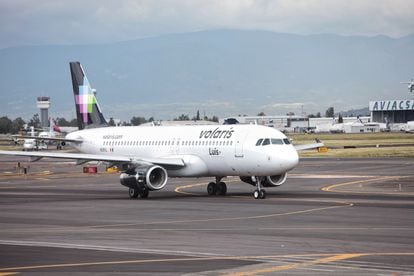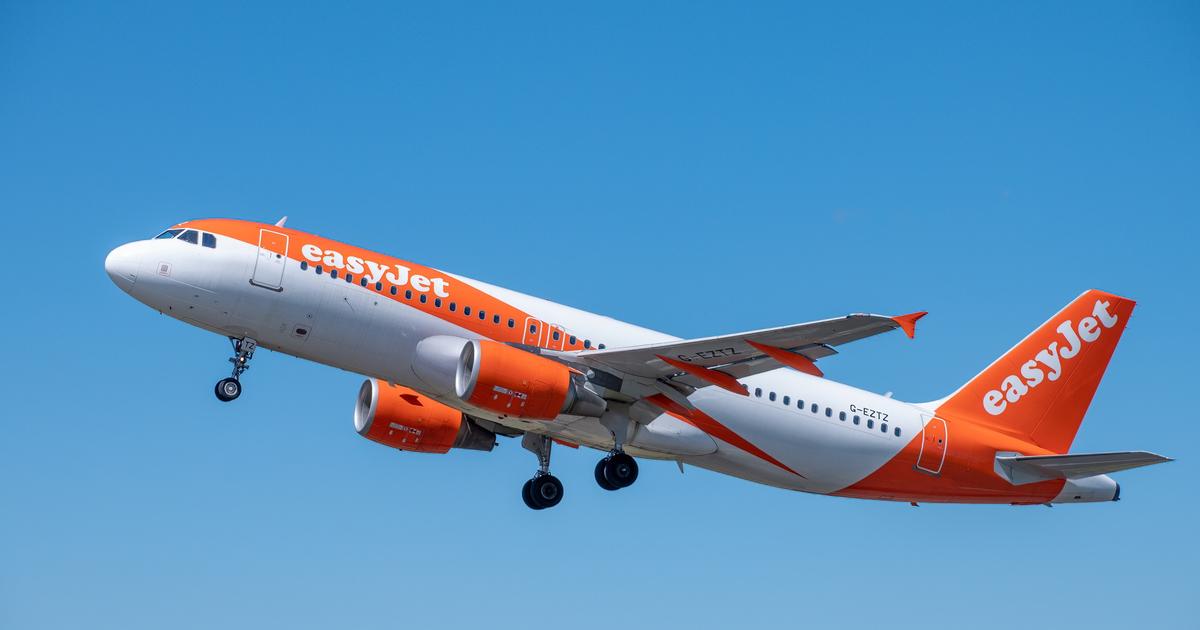A Volaris plane at Mexico City International Airport Sáshenka Gutiérrez / EFE
Mexico's loss of category 1 in air safety has hit the country's airlines like a strong gust of wind at takeoff. The decision of the US Federal Aviation Administration (FAA) puts a brake on the opening of new routes to the US, the largest international destination. Therefore, it interrupts the recovery of the sector after the crisis due to the pandemic and leaves it dependent on the domestic market. "It is one more blow to a process that was recovering," says Enrique Beltranena, general director of Volaris, one of the main victims.
Mexican aviation had been prepared for the worst for days.
Still, the feeling that it could be avoided dominated.
The government had stepped on the accelerator in recent weeks and many of the demands made by the United States had been resolved.
It was not enough.
On Tuesday the US Federal Aviation Administration (FAA) dropped the bomb.
The downgrade to category 2 placed Mexico in a group of only eight countries in the world, including Venezuela and Malaysia, that do not meet the minimum standards in air safety.
Although the agency evaluates the quality of the aeronautical inspection and not the airlines, it is the latter that pay for the broken dishes.
More information
The loss of category 1 in aviation safety: a “total surprise” marked by haste and lack of communication
The crisis corners Aeroméxico and Interjet and drives the 'low cost'
The downgrade raises a significant barrier to the US market, which accounts for more than two-thirds of international traffic to or from Mexico.
Nine of the 10 routes abroad with the most flights in the first four months of this year are to cities in the United States, according to government data.
Although the airlines of that country dominate the bilateral connections, the Mexican ones have made inroads with force in recent years and the United States has become a fundamental component of its expansion strategy, which now comes to a halt due to the loss of category 1 .
The decision falls just as Mexican airlines took flight after a disastrous year. In 2020, international tourism to Mexico plummeted 46%. Volaris lost 4,294 million pesos, about 215 million dollars; Aeroméxico, another 42,529 million pesos and decided to file for the bankruptcy law of the United States to restructure its debt. A third, Interjet, is practically extinct. He was dragging a lawsuit with the Tax Administration Service for the millionaire non-payment of taxes and the coronavirus crisis gave him the coup de grace.
Once the most difficult moments of the pandemic were over, airlines viewed 2021 with optimism. Just two weeks before the announcement, Aeromexico had announced the reopening of two routes to the United States and unveiled plans for the incorporation of 24 aircraft, nine of them as early as this summer. Volaris, the largest by number of passengers, had also gone shopping and was looking to add 13 aircraft to its fleet. They did not count on this second stumble.
At the moment, the new planes will not be able to be used to reinforce the connections to the neighbor to the north. Volaris, which had planned to increase the frequencies of its flights to the United States, will reorient itself to the domestic or Central American market. In the short term, Enrique Beltranena considers that the
low cost
is enough with the planes that they already have registered to travel north. "With the 87 we have is more than enough," he says. "We practically have 113% of the capacity for the same period of 2019."
The domestic market may, at first, absorb these additional aircraft. The collapse of Interjet, which in 2019 transported 20% of travelers within Mexico, has left an important gap. However, that margin is not infinite, warns Cuitláhuac Gutiérrez, general director of the National Chamber of Air Transport (Canaero). "The new planes can be used on other routes, but the airlines cannot crowd Cancun or Monterrey because they are going to have a reduction in prices."
While the expansion of Mexican airlines is on hold, US airlines can seize the moment to gain even more ground than they already had. In fact, they were already doing it before the announcement. In April they transported 65% of international passengers to or from Mexico, compared to 26% of Mexican women. Although it is likely that part of this difference will be corrected with the growth of flights to Europe and the rest of Latin America as restrictions due to covid-19 are lifted, two years ago the outlook was more balanced: 44% for the first and 32% for the second.
In addition, Mexican airlines may be left out of the vaccine tourism boom that has exploded in recent months, says Cuitláhuac Gutiérrez. . If it is already difficult to compete with airlines that are 10 times larger in fleet, now it will be even more so ”, he explains.
The other nail notching the loss of category 1 is the cancellation of the codeshare. A US company will not be able to sell tickets operated by a Mexican company. Volaris wanted to minimize this impact; only 0.4% of its flights are occupied by travelers who bought tickets through Frontier, its
American
low-cost
ally
. Aeroméxico has not given figures on the weight of its flights, but it has an important alliance with Delta, with whom it shares 55 codeshare routes.
Although this consequence of degradation is not as serious as the inability to open new routes, it does deprive companies of a useful tool.
“This is a strong upsell for airlines that may not have the capacity to sell in certain markets.
The shared code allows you to get there, ”says Cuitláhuac Gutiérrez.
The watchword is to stay calm.
Volaris sticks to its revenue and capacity forecasts for the second quarter of the year it indicated just 10 days ago.
“They continue to look viable.
The impact in the short term is controllable ”, assures Beltranena.
But another scenario opens up if the situation continues.
"The routes to be offered in summer were already mostly marketed, but if it extends more in time, it could impact the next important season, Christmas," says Gutiérrez
The ball is in the field of the Mexican Government.
The authorities expect to recover category 1 in less than four months and have requested an emergency meeting with the FAA to review the results of the audit.
The director of the Federal Civil Aviation Agency, Carlos Antonio Rodríguez Munguía, admitted to this newspaper that there are still several issues to be resolved, including the hiring of 80 new inspectors and an increase in their salaries.
Subscribe here
to the
newsletter
of EL PAÍS México and receive all the informative keys of the current situation of this country



/cloudfront-eu-central-1.images.arcpublishing.com/prisa/J3ZB2KFOIJAEDP65NTN5UZYYME.jpg)




/cloudfront-eu-central-1.images.arcpublishing.com/prisa/HXJJWNKRZ5D5NKZOZI3RD7WCMY.jpg)
